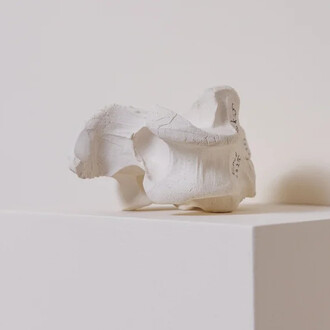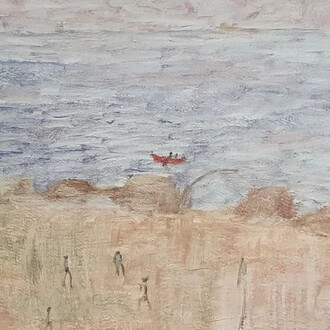At first glance, artist Paul Scott’s transfer-printed tableware may look familiar—like something you have seen in your grandparents’ china cabinet or a second-hand shop. Look closer and you will notice subtle differences that add up to a powerful narrative shift. Scott (British, b. 1953) subverts this seemingly unassuming blue-and-white “cultural wallpaper” to create sharp, thought-provoking social commentary. Working with new ceramic forms or repurposing antique pieces, Scott breaks, reassembles, erases, and adds details using screenprinting, engraving, and collage processes to create new “historical” patterns. Broadly, his works address updated narratives about art, history and American experiences.
During a visit to Ohio State University in 1999, Scott encountered a new genre of historical blue-and-white transferware. Beginning in the mid-1800s, manufacturers in Staffordshire, England, produced these objects specifically for American collectors. Long familiar with British transfer-printed ceramics, Scott knew little about those made for export—wares that memorialized certain American figures, landscapes, architecture, industries, and historical events. Since then, Scott has become one of a long line of travelers and observers who have visited and then written about or depicted this country, offering an outsider’s perspective. To this end, the artist’s New American scenery series reflects his personal experiences of being and traveling in America, and, in his words, the need to “rebalance the narrative with something more contemporary and inclusive.”
Ripe for reframing and responding, the museum’s American art collections will serve as a springboard for Scott to present existing and new works, inviting various perspectives and initiating conversations about our shared American experience.












